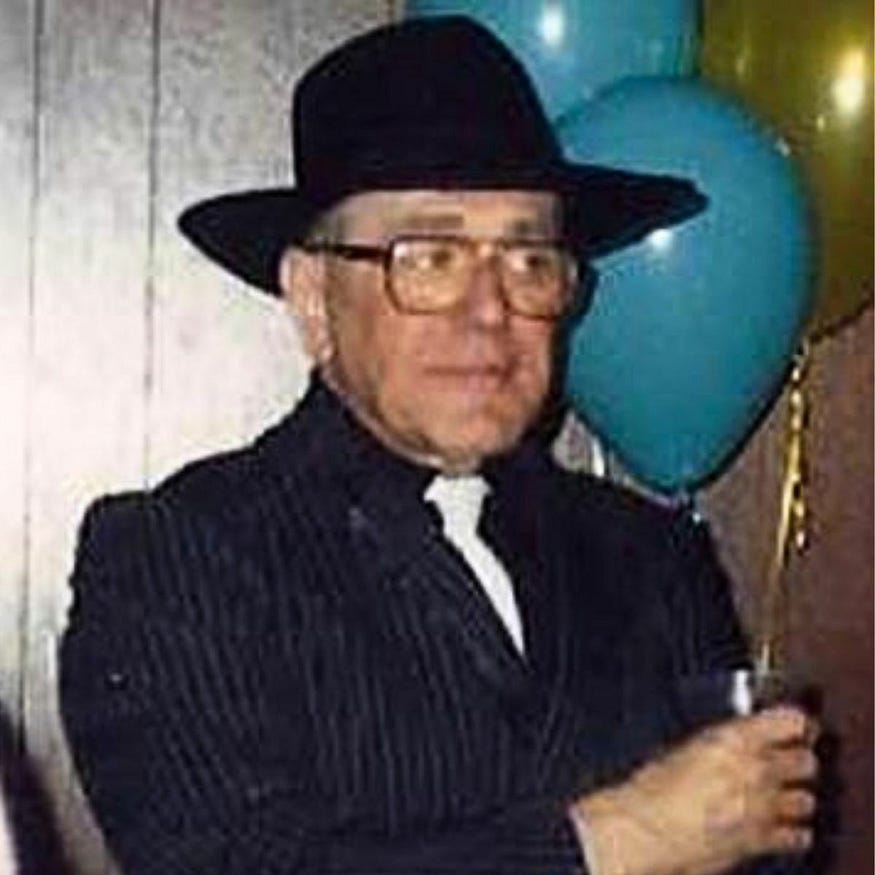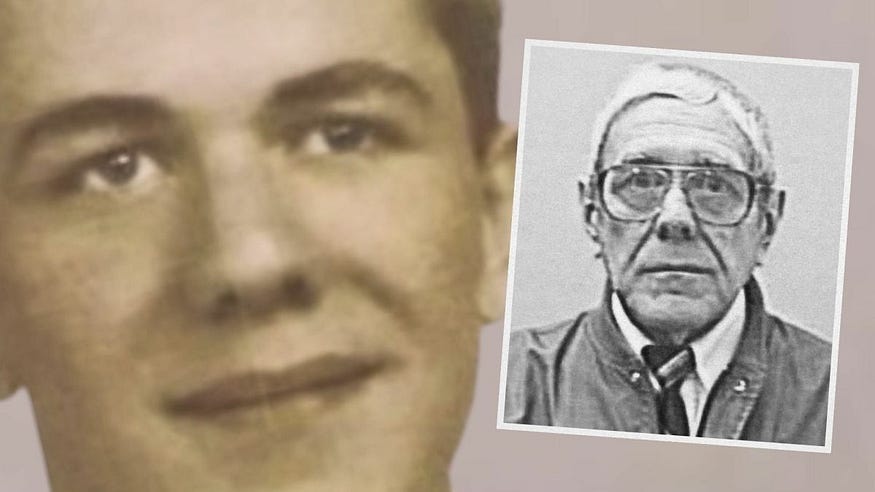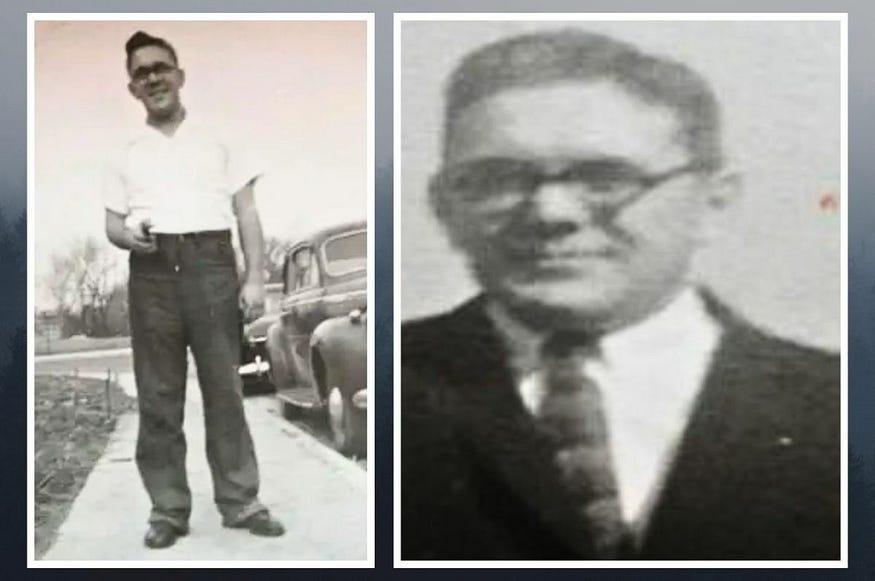Robert Nichols: Ohio Man’s Fake Identity Revealed After Death
What compelled him to leave it all behind and then assume a new identity years later?
A Mystery Begins
On July 31st, 2002, Joseph Newton Chandler III was found dead in his small efficiency apartment in Eastlake, Ohio, during a wellness check. Eight days earlier, Joseph, suffering from late-stage colon cancer, had taken his own life.
He had turned off the air conditioner, shut all of the windows, and went into his bathroom, where he shot himself in the head with his .38 caliber Charter Arms revolver.
Due to the extreme heat, his body was badly decomposed by the time it was discovered and law enforcement was unable to obtain fingerprints. However, he was soon identified as Joseph Chandler III, 75, who lived at that residence and had been working in the Cleveland area since the late 1970s.
As Joseph had no will, a search soon began to locate his next of kin, which led to a shocking discovery—the deceased man wasn’t actually Joseph Chandler III, but for unknown reasons had been living under a stolen identity for decades.
Genetic genealogy would later reveal that his true name was Robert Ivan Nichols, a veteran who had left his home in 1965 and ceased all communication with his family. Yet he didn’t take on a new identity until 1978, leading investigators to wonder just what had compelled him to do such a thing after so many years.
Who—or what—was Robert Nichols running from?
It started off as a regular suicide. Nothing suggested foul play. Nothing seemed out of the norm. Then we had loads of questions.
— Larry Reik, Eastlake Police Chief
Robert Ivan Nichols
Investigators learned that the real Joseph Newton Chandler III had died in a car accident with his parents on Christmas Day, 1945, in Sherman, Texas. He was only eight years old. Like many other mysterious aspects of this case, how Robert Nichols became aware of the real Joseph Chandler remains unexplained.
Robert Ivan Nichols was born on September 12th, 1926, in New Albany, Indiana, to parents Silas and Alpha Nichols. After graduating from high school in 1944, he joined the Navy and became a firefighter. On May 3rd, 1945, Robert’s ship, the USS Aaron Ward, was attacked by kamikaze planes. Of his 16-man team, he was one of only four men to survive.
It was “52 minutes of hell,” Robert would say in a newspaper interview. “When it was all over, all I thought about was home.”
During the attack, he had cared for the wounded and dying, in addition to pumping water out of the ship. Robert sustained injuries to his back and hip and was later awarded the Purple Heart.
Upon his return home, he burned his uniform in a coal bin and shot the wooden airplanes that he’d built as a child with a BB gun. Later his son Phil recounted that his father became a pacifist after the war.
Starting a Family
Robert was described by those who knew him as quiet, eccentric, and highly intelligent. He met Laverne Kort, his future wife, at a square dance and the couple married on January 9th, 1947. They had three sons together—Charles, Phil, and David. Robert supported the growing Nichols family in his career as a draftsman for General Electric.
Although Robert was there in a physical sense, he was often emotionally distant with his family, essentially behaving like a stranger in his own home. Phil said of his father:
“I have no explanation for what he did. He was a rather unusual person. He was there, and he wasn’t. He was like a stranger who lived in our house. He was with us, but rarely interacted with us.”
Despite this, his family found him to be a gentle and well-mannered person, if a little odd.
Robert Moves Away
In 1964, Robert began making suggestions to Laverne, encouraging her to get a job and her driver’s license. It appeared that he wanted to make sure she was self-sufficient before he left, because that same year, he announced that he was divorcing Laverne. He mentioned vaguely that she’d “know why in due time,” but Robert would never provide an explanation.
He asked his son Phil if he’d like to come with him, but Phil declined, explaining that he intended to join the military after graduation. So Robert moved alone to Dearborn, Michigan. His sons rarely heard from him following his departure, but he kept in regular contact with his parents, writing them letters about his life and experiences in a new city.
In one such letter, he mentioned that he’d started attending church, hoping to meet “the right kind of people.” A year later, in 1965, he moved to California.
“I will write as often as I can and let you know how I am doing,” Robert told his parents.
Phil also heard from Robert that year, but his last communication from his father was far stranger and more inscrutable—an envelope that contained a single penny. There was no letter or anything else to explain the meaning behind the gesture.
After that, no one in the Nichols family would ever hear from Robert again.
A New Identity
The details of Robert’s life in the years after his disappearance are hazy. His family reported him missing in 1965 and attempted to locate him, but had no luck.
However, it is known that he requested Joseph Chandler’s birth certificate while in Rapid City, South Dakota, in 1978. Once he had obtained the document, he used it to apply for a Social Security card, with which he was able to create a new identity.
That same year, he moved to northeast Ohio, where he worked on a contract basis as an electrical engineer and draftsman at the Lubrizol Corporation, a chemical manufacturer.
Even in his new life, he was still taciturn and mostly preferred to be alone, revealing little about his past to those around him. What he did tell them was largely fabricated.
“Joe was very shy,” noted one of his coworkers. “He didn’t want to be bothered by anybody. He didn’t want to talk to other people. He was pretty deep into what he had to do for work.”
Strange Behavior
Those who worked with him found his behavior strange, offering as examples the fact that he liked to listen to white noise for hours at a time, and that he once attended a Halloween party dressed as a gangster, but didn’t speak to anyone the entire night.
In one of the only times that Robert ever initiated a conversation, he came up to someone at work and reportedly said: “Hey, there’s something I want to tell you one day.” But he never brought it up again.
Additionally, he once made a 700-mile trip to an L.L. Bean store in Maine, only to turn around and head home immediately when he wasn’t able to find a parking space.
Robert kept a suitcase packed, ready to leave at a moment’s notice. He would disappear for days or weeks at a time, each time informing his coworkers beforehand that “they’re getting close,” yet never elaborating on who “they” were. But he always came back eventually.

What Was Robert Running From?
Law enforcement believes that Robert must have committed a crime at some point, providing the motivation to assume a new identity. It was quickly ruled out that he was in the witness protection program.
“If he’s running away from just his family, typically when we see that, they don’t go to the extent that Joseph Newton—sorry, Robert Nichols—did,” said U.S. Marshal Pete Elliot.
Zodiac Killer?
Still, any evidence to support a past life of crime remained elusive. An examination of cold cases in the areas that Robert was known to have lived failed to turn up any connection to him. His time in California led some to speculate that he could have been the Zodiac Killer, but nothing has ever been found to support this theory either.
Yet Robert appeared to be deeply concerned about his secret being exposed, an outcome he wished to avoid even after his death. He marked his suicide day on the calendar—July 23rd—and had been checking off the days leading up to it. It’s believed that his colon cancer diagnosis was the catalyst for his decision to end it all.
And, as previously mentioned, he’d turned off the air conditioner and closed all of the windows before ending his life, as if for the purpose of accelerating his rate of decomposition and making it more difficult to lift fingerprints.
Additionally, he left behind no suicide note. He’d purchased the weapon that he used to shoot himself for $263 from a local store in April 2002.
Robert’s phone records showed that he had placed a call to a woman in Texas months before his death, but she didn’t know him and his reasons for contacting her are unknown.
Investigators were unable to obtain usable prints from anywhere in his apartment; it looked as if everything had been wiped down. He had some finance books around his place, gadgets that he liked to work on, and a home computer, which revealed troubling searches related to Nazism and plastic explosives.
If he wasn’t concealing a dark past, is it possible that he was simply the victim of an untreated mental illness?
Surprising Past
Mike Onderisin, one of his coworkers at Lubrizol for almost 12 years, was appointed by the court as the executor of his estate. He also held a small memorial service for his friend. When Robert’s identity theft came to light years later, Mike was shocked:
“I never had any idea, but we really didn’t talk about personal things. I certainly wouldn’t have gone for the idea of being executor if I had known all of that.”
The only personal information that Robert had ever mentioned to Mike was the false claim that he’d grown up in East Liverpool, Ohio, had a sister in Columbus, and that he’d been married before—but made up details about his wife, on one occasion saying she had been Catholic, and another time claiming she was a Cuban woman who married him for immigration purposes.
I always thought he was on the run. He did a good job.
— U.S. Marshal Peter J. Elliott
Other Developments
U.S. Marshals took over the investigation in 2014, hoping to find answers in fugitive cases.
IRS records showed that Robert Nichols continued to earn money using his real Social Security number until 1976, two years before he stole Joseph’s identity. He had no criminal record in either life.
A large portion of the $82,000 in his savings account ultimately went to private investigators.
Genetic Testing
Though Robert had been cremated, there was still a tissue sample from him, taken during his hospitalization in 2000. Genetic genealogy and GEDmatch led investigators to the home of Phil Nichols in 2018. They explained the situation to him and showed him pictures that had been taken over the past few decades, which Phil quickly confirmed were of his father.
Attorney Jim O’Leary, who represented Mike Oderisin, stated:
“This guy knew what he was doing. You’ve got to wonder, what terrible thing exactly would you be running from to go to this kind of trouble to conceal your past?”
For his part, Phil doesn’t believe that his father was ever a violent criminal.
“I find it hard to imagine because he was always such a gentle person.”
David, one of Robert’s other sons, died in 2015. He was only nine years old when his father vanished.
Robert’s parents, Silas and Alpha, passed away in 1982 and 1990, respectively. Laverne died in 1992.
Phil feels no bitterness towards his late father or his choice to leave the family:
“I hold no animosity whatsoever. I had always hoped that he’d found a happy life somewhere.”
His case is open and unsolved. Though the investigation is still active, the lack of any substantial clues or evidence has put it at a standstill. Why Robert Nichols left his family behind and chose to assume a new identity many years later—and why, until his dying day, he continued to be so strongly committed to keeping his secrets—remains a mystery.
Sources
(This article was originally published on HubPages)






